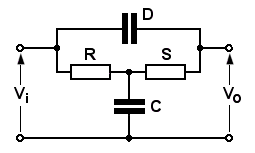I'm doing standard 50-year repairs on a customer's 1965 Gibson Skylark GA-5, but, in stock form, the amp's tone is fairly annoying. Strumming the guitar produces a fizzy sound like someone playing a zither that sits atop the rest of the signal, probably a result of the bass control that's bypassed by a 500pF capacitor to prevent excessive treble losses.
I ran a couple of experiments based on increasing Miller capacitance and a technique I've seen used in Leslie amps and a few others (capacitor across the output tube plates). A 10pF cap between the plate and grid of the second 12AU7 stage in combination with a 1,000pF capacitor of sufficient voltage rating across the EL84 plates seems to get rid of that fizziness while leaving plenty of natural-sounding high end. (I like treble-cut circuits that also reduce any tendency to ultrasonic oscillation, especially in an amp like this with no global NFB.)
Is there a better way to tweak this kind of Gibson tone stack, or does this relatively simple mod sound like a good idea?
On another site, I read of someone inserting a 50k pot between C4 and ground and dialing in ~36k to prevent excessive loss of mids via the bass control.

I ran a couple of experiments based on increasing Miller capacitance and a technique I've seen used in Leslie amps and a few others (capacitor across the output tube plates). A 10pF cap between the plate and grid of the second 12AU7 stage in combination with a 1,000pF capacitor of sufficient voltage rating across the EL84 plates seems to get rid of that fizziness while leaving plenty of natural-sounding high end. (I like treble-cut circuits that also reduce any tendency to ultrasonic oscillation, especially in an amp like this with no global NFB.)
Is there a better way to tweak this kind of Gibson tone stack, or does this relatively simple mod sound like a good idea?
On another site, I read of someone inserting a 50k pot between C4 and ground and dialing in ~36k to prevent excessive loss of mids via the bass control.




Comment